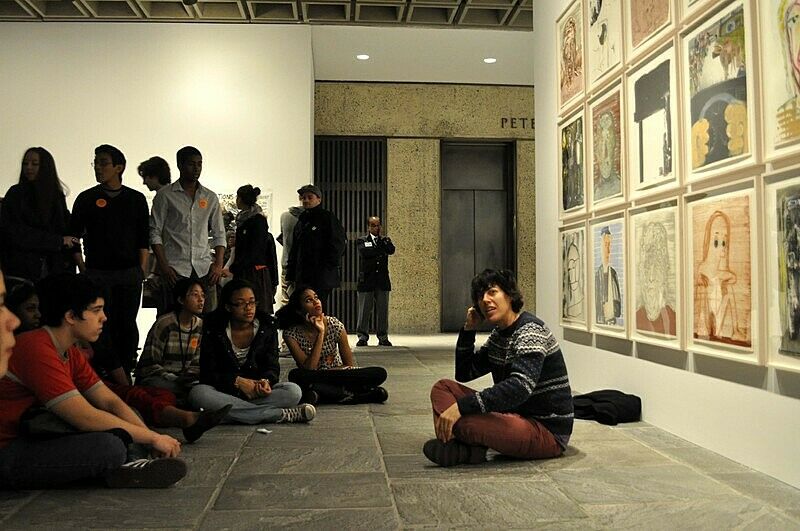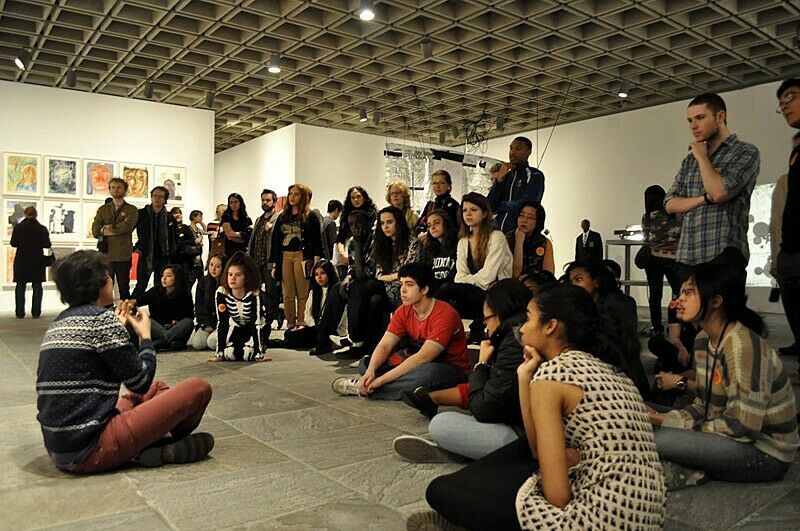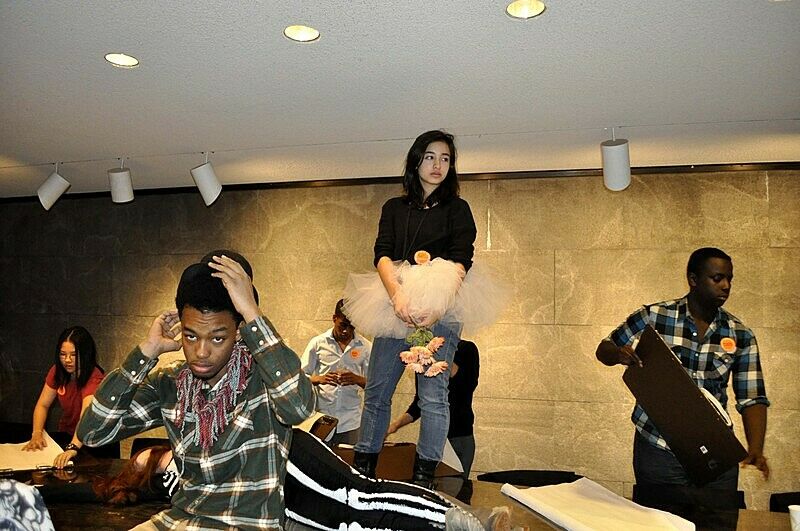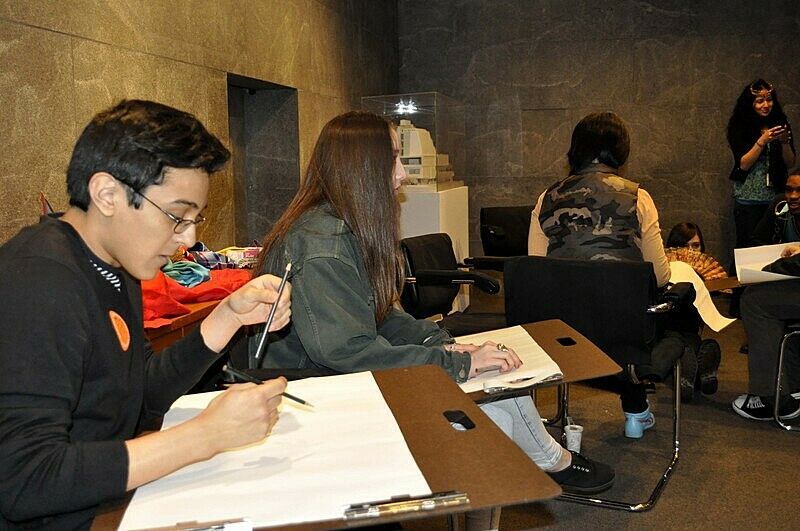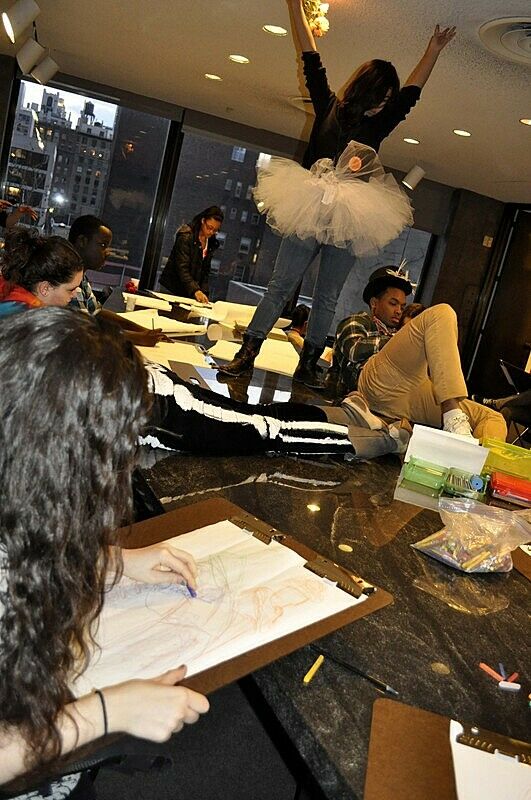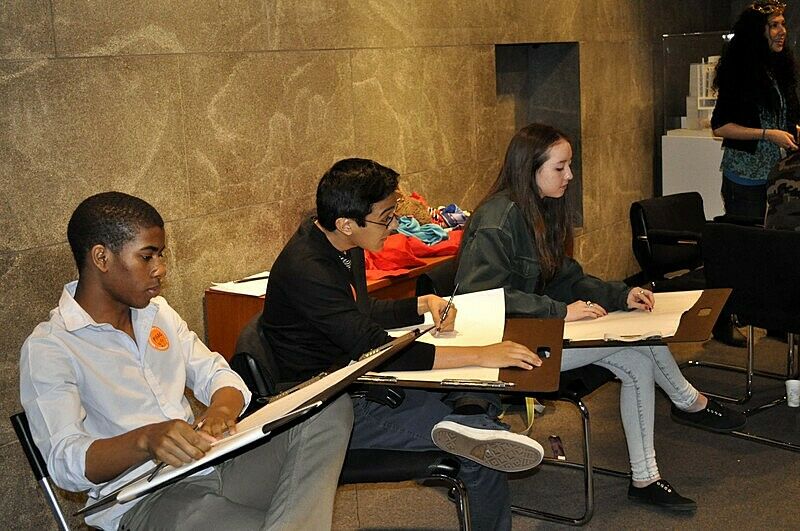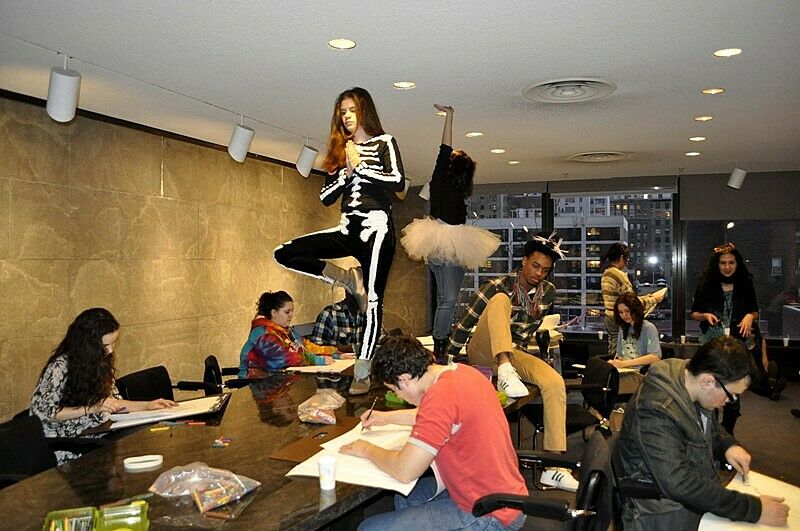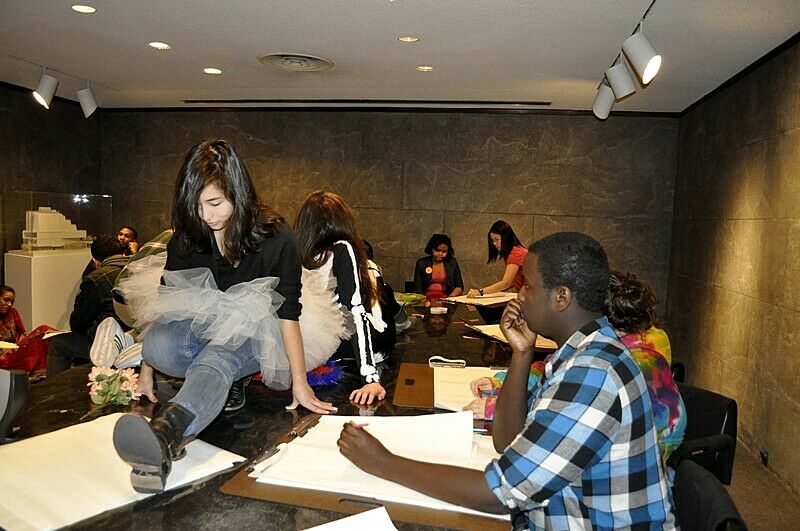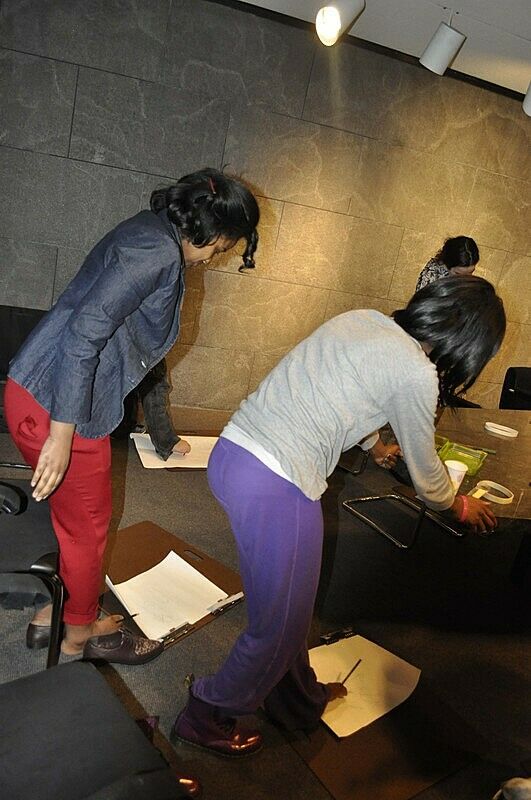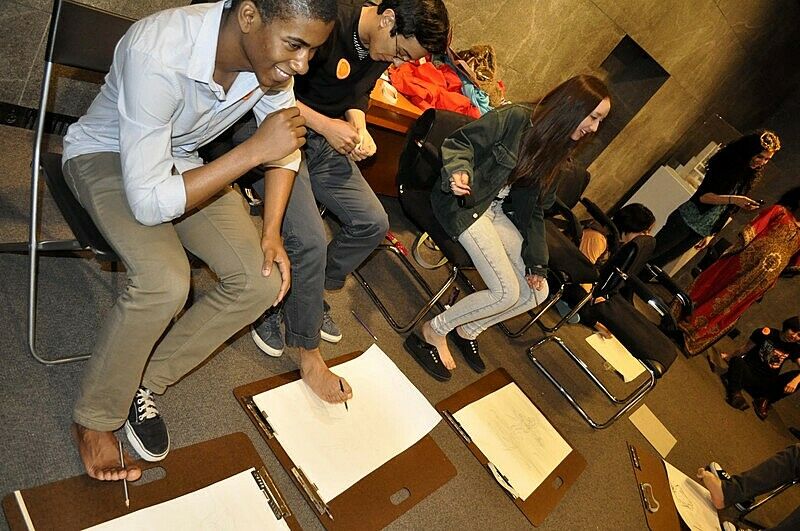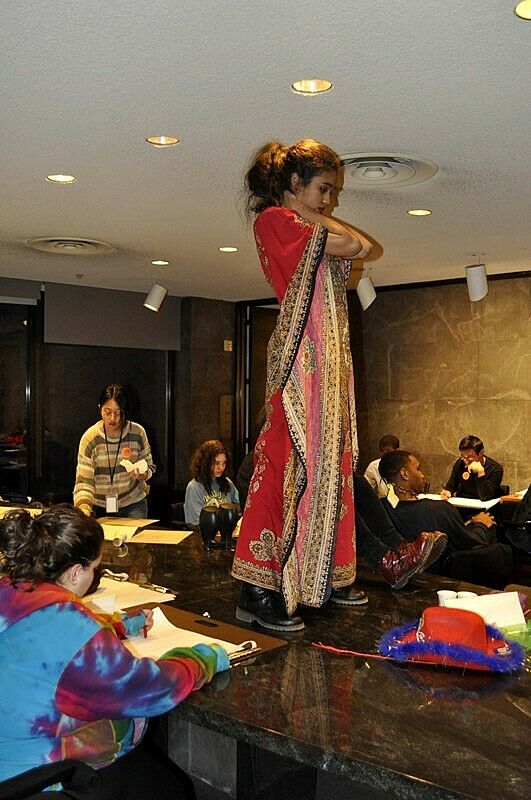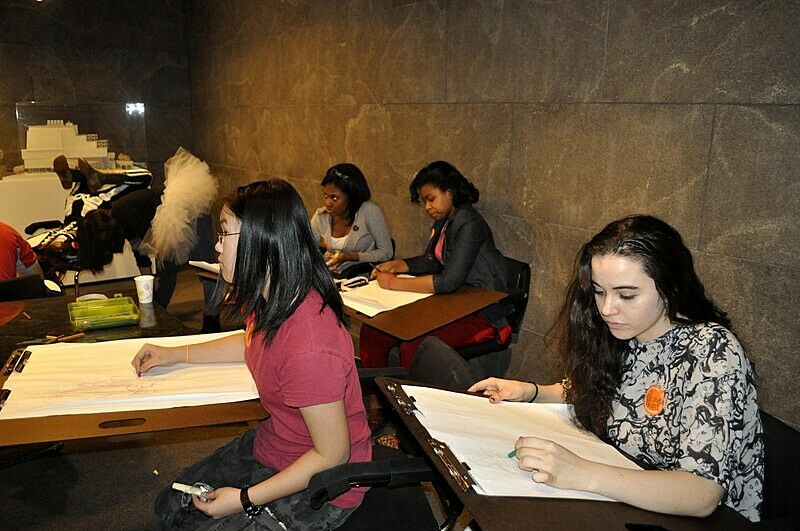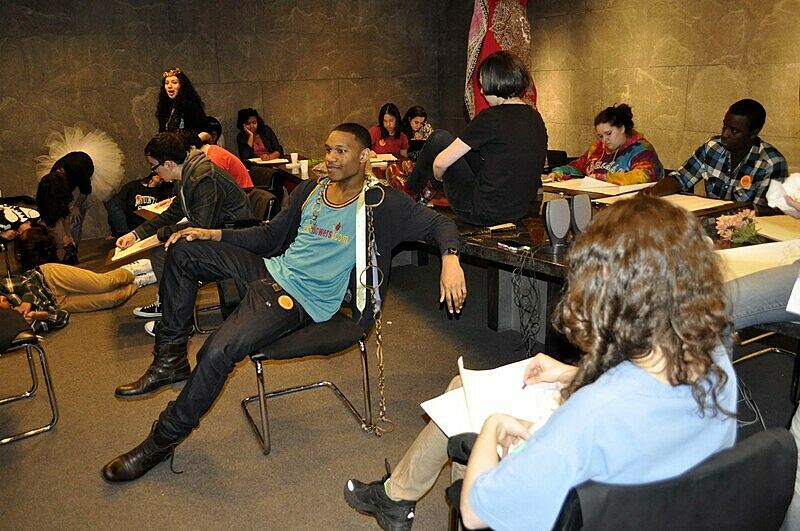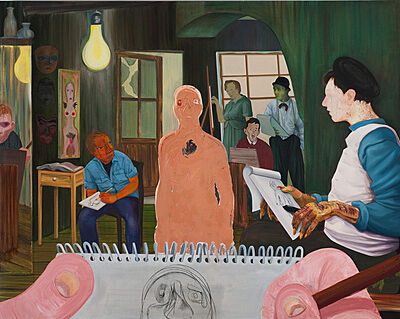Nicole Eisenman: Artist Talk and Drawing Workshop
Apr 12, 2012
I was very excited to meet artist Nicole Eisenman on Friday, March 9, at one of the Whitney’s teen talks. Her work is currently on view in the Biennial 2012 exhibition. The event was open to all New York City high school students and it was great to see a diverse group of youth who were there simply to hear Ms. Eisenman speak about her work. This was understandable, as the artist is known for her vivid colors, paint handling, subject matter, and especially her slightly misshapen figures that translate fluidly from paintings to prints.
Ms. Eisenman sat comfortably in front of her wall of prints and spent a few minutes talking about her work, but she mostly opened up the discussion to the fifteen or so teens at the talk. A large crowd of Biennial viewers formed around the artist, but questions remained reserved for teens. Topics included her experience as an undergrad at Rhode Island School of Design (RISD), finding inspiration in graphic novels by writers such as Charles Burns and paintings by French artist Claude Monet. She also spoke about the continuous aspects of her work, personal vs. private issues, and her choices of medium. A comment that particularly stood out to me was about printmaking. The artist said that she made the prints on view during an emotional part of her life. She explained that the fast process of monoprinting (about fifteen to forty minutes), and the compositions that were mostly made up on the spot allowed her to capture a lot of emotion.
After the talk, teen participants gathered in a private part of the Whitney for a figure drawing workshop with Youth Insights Leaders as our impressively still models. Inspired by the wacky figures of Ms. Eisenman’s work, we were given increasingly difficult assignments, from thirty-second to one- or five-minute gesture drawings, ending by drawing with our non-dominant foot! After these challenges, the control of drawing with the dominant hand felt like a luxury. After this experience and having examined Eisenman’s work, The Drawing Class (2011), I felt like the owner of the thumbs in the foreground of that painting.
Elizabeth, YI Artist

